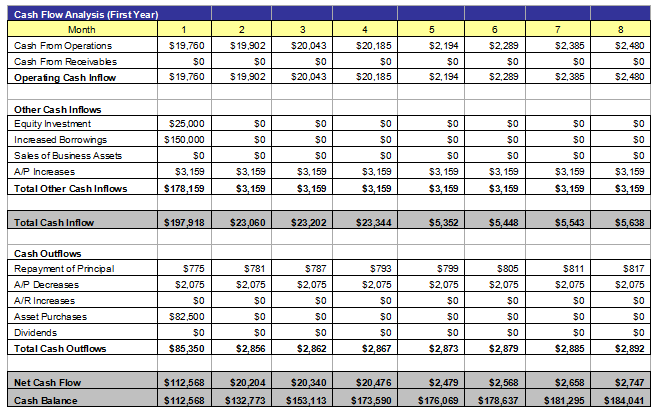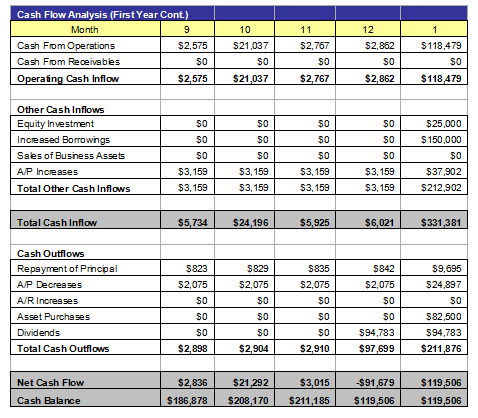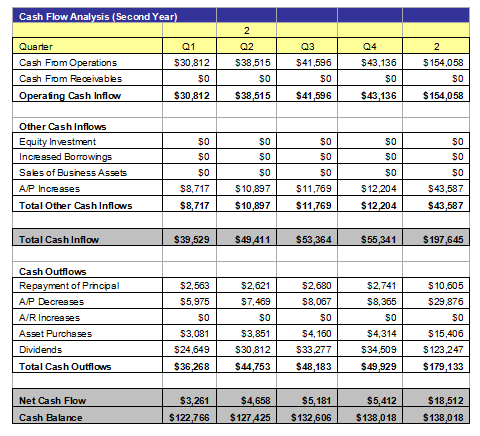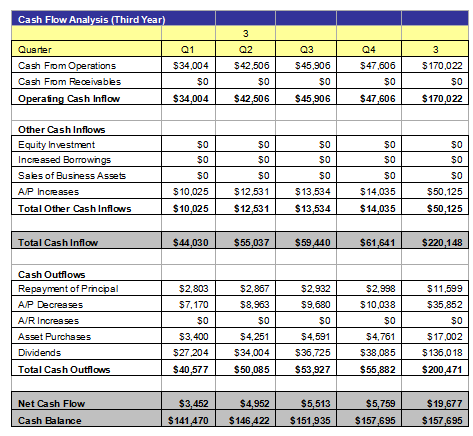Free Soup Kitchen Business Plan
For Raising Capital from Investors, Banks, or Grant Companies!
Please note that the financials
in this complete free business plan are completely fictitious and may not
match the text of the business plan below. This free business plan demonstration
purposes only. If you are interested in purchasing the completed editable MS Word
and Excel documents for this business plan, please click the button below! Also,
the text of the business plan is formatted with a fully automated
table of contents.
Return to
Samples Page
It should be noted that there is no special software required to use these
templates. All business plans come in Microsoft Word and Microsoft Excel format.
Each business plan features:
- Excecutive Summary
- Company and Financing Summary
- Products and Services Overview
- Strategic Analysis with current research!
- Marketing Plan
- Personnel Plan
- 3 Year Advanced Financial Plan
- Expanded Financial Plan with Monthly Financials
- Loan Amortization and ROI Tools
- FREE PowerPoint Presentation for Banks, Investors,
or Grant Companies!
1.0 Executive Summary
The purpose of this business plan is to raise $250,000 for the development of a not for profit soup kitchen while showcasing the expected financials and operations over the next three years. The Soup Kitchen, Inc. (“the Foundation”) is a New York based 501(3)(c) corporation that will provide food to a number of hungry individuals throughout the United States and abroad. The Foundation was founded by John Doe.
1.1 Products and Services
As mentioned above, the Soup Kitchen will provide food on an ongoing basis to individuals that are hungry within the Company’s target market. The Foundation will generate revenues from donations, sponsorships, and enrollment in ongoing donation programs that the Company will market to the general public. From time to time, the Company will host gala events to raise additional capital for its hunger causes and soup kitchen operations.. The third section of the business plan will further describe the operations offered by the Soup Kitchen.
1.2 The Financing
Management intends that the first round of capital will come as a sponsorship grant for $250,000, which will be used to launch the charitable operations of the Foundation. As the organization is a non-stock corporation, no equity position or distribution of EBITDA income will be distributed to any party that provides capital for the Foundation. After immediately receiving the capital infusion, the Foundation will establish its office and begin to make grants to other not for profit organizations and causes as discussed above. The initial funds will be used for the following: • Establishment of the 501(3)(c) entity. • Financing for the initial capital to be used for the Soup Kitchen facility. • General working capital for the Foundation The second section of the business plan will further document the initial uses of the grant/sponsorship funds.
1.3 Mission Statement
The Soup Kitchen’s mission is to provide support to local people that are hungry and are in need of a warm meal.
1.4 Mangement Team
The Company was founded by John Doe. Mr. Doe has more than 10 years of experience in the not for profit industry. Through his expertise, he will be able to bring the operations of the business to profitability within its first year of operations.
1.5 Sales Forecasts
Mr. Doe expects a strong rate of growth at the start of operations. Below are the expected financials over the next three years.
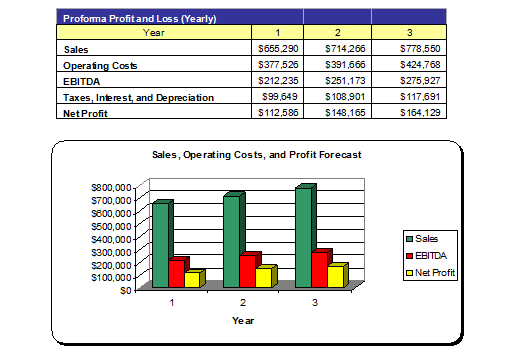
1.6 Expansion Plan
The Founder expects that the business will aggressively expand during the first three years of operation. Mr. Doe intends to implement marketing campaigns that will effectively target individuals that will donate to the Foundation’s operations within the Soup Kitchen’s target market.
2.0 Company and Financing Summary
2.1 Registered Name and Corporate Structure
Soup Kitchen, Inc. The Company is registered as a 501(3)(c) corporation in the State of New York.
2.2 Required Funds
At this time, the Soup Kitchen requires $250,000 of grant or sponsorship funds. Below is a breakdown of how these funds will be used:
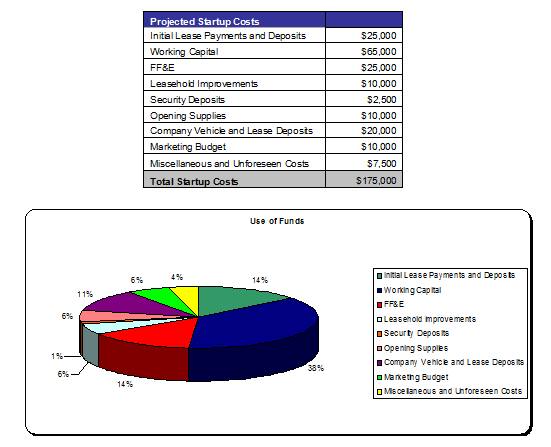
2.3 Investor Equity
As the business is a non-stock corporation, no formal ownership will be held by donors, Management, or corporate sponsors.
2.4 Management Equity
The non-stock corporation exists as its own entity. Management will retain no formal equity interest in the corporation.
2.5 Exit Strategy
In the event that Foundation wishes to cease operations, the Management will file the appropriate articles of dissolution, and the assets of the Foundation will be liquidated and granted to other charitable organizations.
3.0 Products and Services
As stated in the executive summary, the Soup Kitchen intends to provide warm meals to individuals from the Company’s location. The Foundation will be operational from noon until nine at night. For some needy people, food will be available to take home to their families. Management expects that food that is given away to individuals to take home will come from individuals that donate directly to the Soup Kitchen. Mr. Doe is committed to bringing the positive mission of the Foundation to fruition by properly divesting funds to the Soup Kitchen’s operations while remaining in compliance with all issues pertaining to not for profit operations.
4.0 Strategic and Market Analysis
4.1 Economic Outlook
This section of the analysis will detail the economic climate, the not for profit organization industry, the customer profile, and the competition that the business will face as it progresses through its business operations. Currently, the economic market condition in the United States is moderate. The meltdown of the sub prime mortgage market coupled with increasing gas prices has led many people to believe that the US is on the cusp of a potential double dip economic recession. This slowdown in the economy has also greatly impacted real estate sales, which has halted to historical lows. This downturn in the economy may lead to fewer donations and corporate sponsorships for the Foundation as consumers and corporations will have less discretionary income and profits for distribution to charitable causes, like those offered by the Soup Kitchen.
4.2 Industry Analysis
Total charitable giving to organized charities totaled more than $245 billion dollars. Charitable giving is a luxury for most people and businesses, and as such, during periods of economic decline, Management expects a severe decrease in the amount of donations made to the Foundation. However, there are tremendous tax benefits that allow charitable giving to have benefits regardless of the overall economic market. Below are some statistics regarding American charitable organizations: • The majority of that giving came from individuals, $187.9 billion. Giving by individuals grew by 1.4 percent (when adjusted for inflation). • Giving by bequest was $19.8 billion, foundations gave $28.8 billion, and corporations donated $12 billion. • Religious organizations received the most support--$88.3 billion. Much of these contributions can be attributed to people giving to their local place of worship. The next largest sector was education ($33.8 billion). When adjusted for inflation, all but two categories of charities saw increases in contributions. Giving to international affairs groups in 2004 declined by 1.8 percent and giving to human services organizations dropped by 1.1 percent.
4.3 Customer Profile
Management expects that the average single donor to the Foundation will be a middle aged upper middle income earning individual that wants to give back to the community. Management will aggressively seek to create awareness about the Foundation’s programs within the northeastern part of the United States. Demographics among individual donors include, but are not limited to: • Male or Female • Aged 35+ • Annual household income exceeding $75,000 • Actively supports charitable causes on a regular basis Additionally, the Foundation expects that it will achieve donations from corporate and large foundation sponsors that are seeking to expand the number of Soup Kitchen facilities. One of the keys to achieving the Foundation’s goal is to develop strong relationships with corporate benefactors.
4.4 Competitive Analysis
It is extremely difficult to categorize competition among not for profit organizations and volunteer organizations as each organization if competing for the same contributions from corporations, individuals, and grants from government agencies. Among the 10,000 charitable organizations in the United States, all are in competition for the same influx in capital. As such, Management does not feel that the Soup Kitchen is in competition with any other charitable organization that seeks to provide for needy people. All charities are all essentially pursuing the same goal. This is one of the sections of the business plan that you must write completely on your own. The key to writing a strong competitive analysis is that you do your research on the local competition. Find out who your competitors are by searching online directories and searching in your local Yellow Pages. If there are a number of competitors in the same industry (meaning that it is not feasible to describe each one) then showcase the number of businesses that compete with you, and why your business will provide customers with service/products that are of better quality or less expensive than your competition.
5.0 Marketing Plan
The Soup Kitchen intends to maintain an extensive marketing campaign that will ensure maximum visibility for the Foundation in its targeted market. Below is an overview of the marketing strategies and objectives of the Foundation.
5.1 Marketing Objectives
-
• Establish relationships with large grant trusts and corporate benefactors.
-
• Regular hold large scale events that will generate publicity and donation revenue for the Foundation.
-
• Develop an online presence by developing a website and placing the Foundation’s name and contact information with online directories.
5.2 Marketing Strategies
The Foundation will solicit donation revenue from multiple sources. The Foundation intends to engage a large public relations and marketing firm to raise awareness of the Soup Kitchen’s services. Management will also seek to gain celebrity support for public personas that want to contribute their time to the Soup Kitchen’s causes. The business will conduct several mass mailings several times per year in order to gain continual support from the general public. Timely coverage of the Foundation. will be further directed thru ongoing press relations, news releases and feature stories targeted at key charitable organization communities and other media outlets. Publicity activities will be designed to generate ongoing coverage about the Foundation in targeted media by providing writers and editors with newsworthy releases, features, stories, briefs, and visual material for their columns and stories. In depth coverage may also be obtained about the Foundation by hosting in-house interviews to be conducted by the Foundation’s spokesperson.
5.3 Pricing
In this section, describe the pricing of your services and products. You should provide as much information as possible about your pricing as possible in this section. However, if you have hundreds of items, condense your product list categorically. This section of the business plan should not span more than 1 page.
6.0 Organizational Plan and Personnel Summary
6.1 Corporate Organization
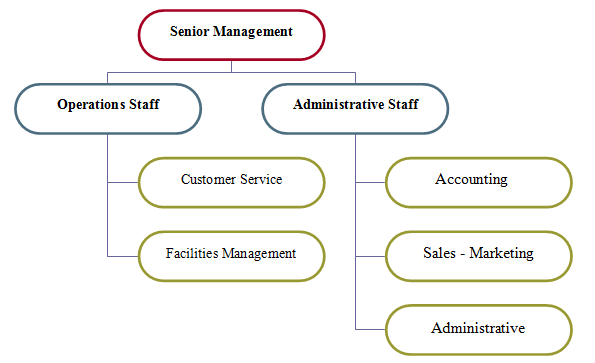
6.2 Organizational Budget
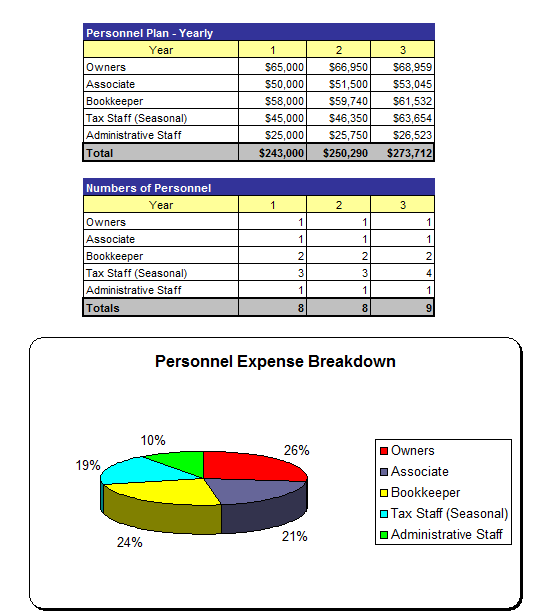
6.3 Management Biographies
In this section of the business plan, you should write a two to four paragraph biography
about your work experience, your education, and your skill set. For each owner or
key employee, you should provide a brief biography in this section.
7.0 Financial Plan
7.1 Underlying Assumptions
-
• The Soup Kitchen will have an annual revenue growth rate of 14% per year.
-
• The Foundation will initially be seeded with $250,000 of grant capital.
-
7.2 Sensitivity Analysis
The Foundation’s revenues are sensitive to the overall condition of the financial markets. Charitable contributions are a luxury, and as such, during times of economic recession, the Foundation expects that its incoming contributions will decrease. Management will enact several procedures to ensure that the Foundation can survive severe decreases in its charitable revenue.
7.3 Source of Funds
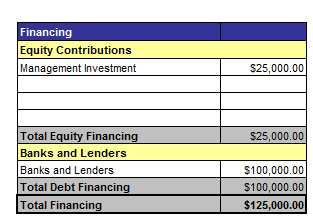
7.4 General Assumptions
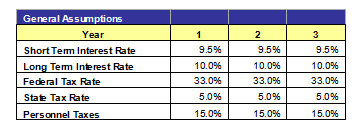
7.5 Profit and Loss Statements
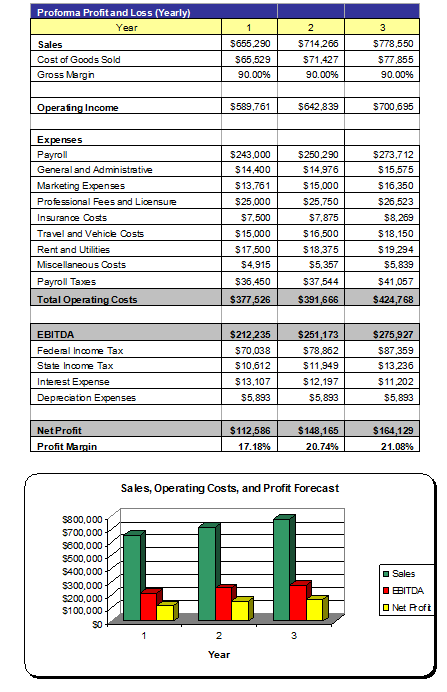
7.6 Cash Flow Analysis
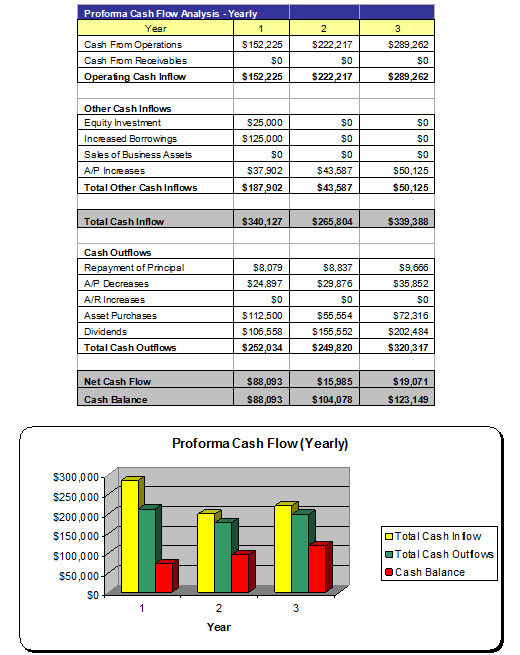
7.7 Balance Sheet
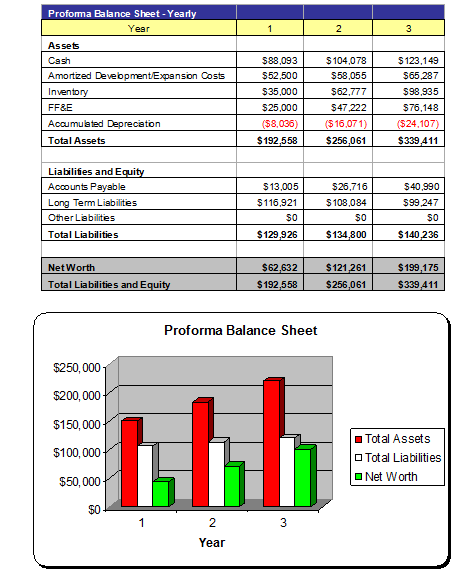 .
.
7.8 General Assumptions
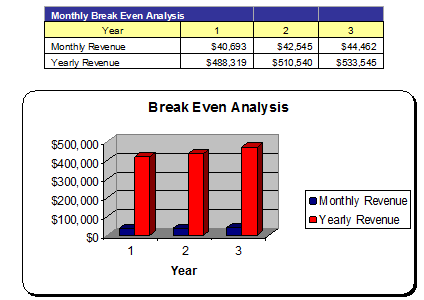
7.9 Business Ratios

Expanded Profit and Loss Statements
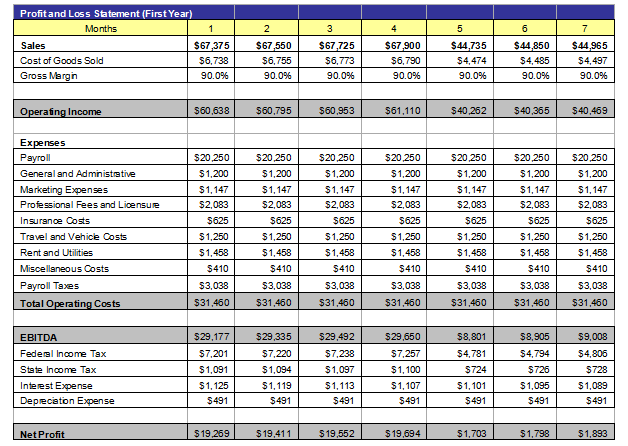
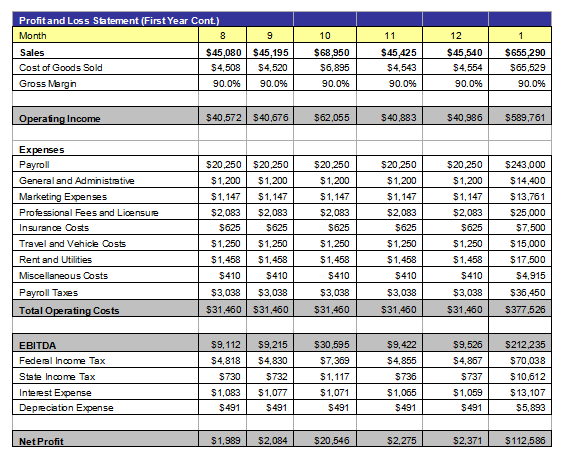
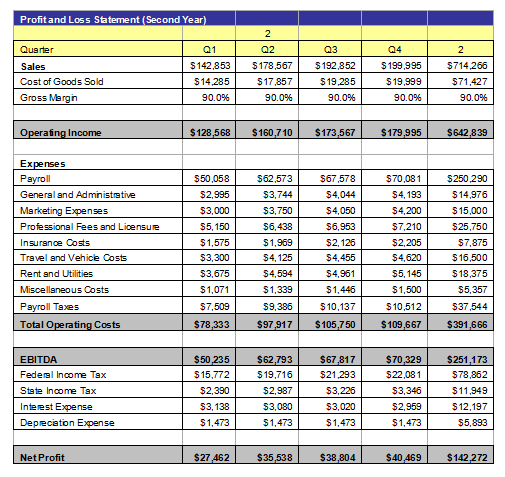
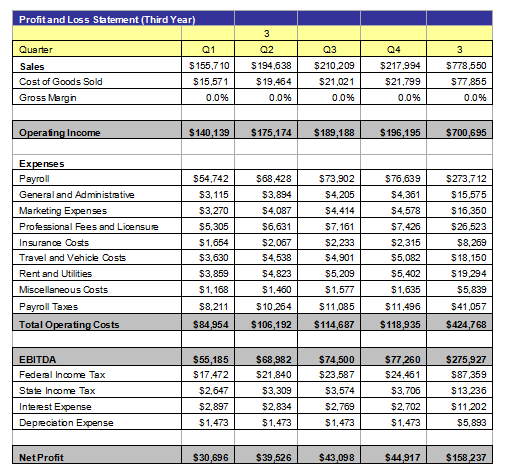
Expanded Cash Flow Analysis
